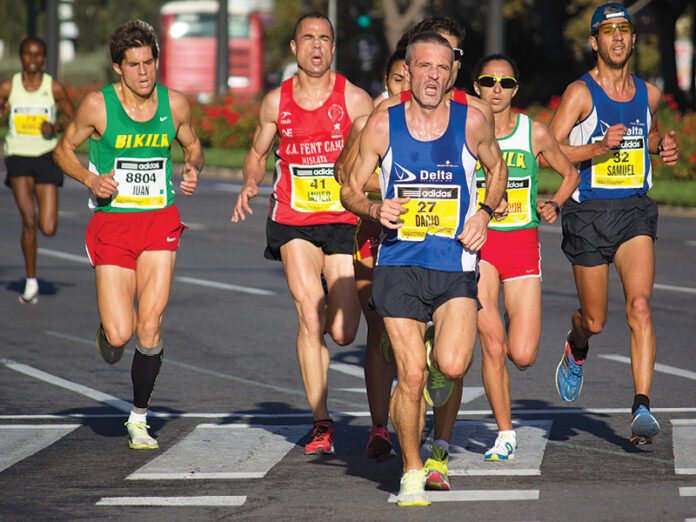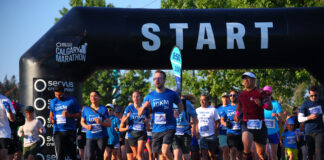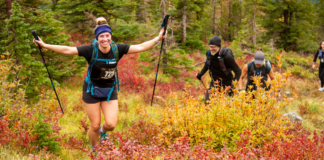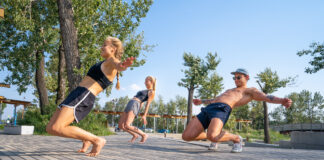
For every runner, there is one inevitable truth — as you get older, you will eventually slow down. There is no way to prevent this from happening, but it is possible to delay it.
As I approach my 40th birthday, I know that I will never run as fast as I did in my 20s. But I still look forward to seeing how quickly I can get my slightly slower body around 10K and Half Marathon race courses.
I was a competitive distance runner until my late-20s, then my training took a dip as life caught up with me. In my mid-30s, once my kids were older and I was able to return to a more consistent training regimen, I realized I would have to make several adjustments to the training schedule I kept in my younger years. Here are some of things I learned along my racing journey that may help you run faster than Father Time.
Be consistent
Regardless of your age, maintaining a consistent training schedule is one of the best ways to run faster. This doesn’t mean more mileage or higher intensity workouts, it simply means keeping your lifestyle as uniform as possible every week. This is one key reason I didn’t run as fast in my early 30s — I just didn’t run as consistently week in and week out. If you run five days one week, then only two days the next, get too few hours of sleep far too often and don’t eat right, your training and racing will suffer. Alternatively, if you’re able to commit to running/working out just four times per week, are able to limit the late nights and stick to a relatively healthy diet, you will perform better.
Adjust training frequency/intensity
It’s important to adjust both training frequency and intensity as you get older. In my mid-30s, when I returned to the type of training I did in my 20s, I quickly discovered I could no longer do three hard workouts a week plus a long run. My body just didn’t recover the way it used to. The solution was to cut back to two hard workouts (one interval and one tempo workout) with two full days recovery in between, rather than one. As for intensity, perhaps it’s a result of racing longer distances (more 10Ks and Halfs, not 5K and 10K), but the intervals have gotten longer, the pace has slowed and the number of reps has increased. I used to think 10 x 200m or 10 x 400m were the workouts to aim for, but now feel 6-8 x 1,000m is more to my liking. This isn’t to say that you shouldn’t run 200m or 400m intervals, just make sure your training leads to this type of speed workout. If you’re used to doing 1000m or 1600m intervals, don’t suddenly switch to true speedwork. The risk of injury will be greater.
Stick to key workouts
After 25 years of running, I’ve found several workouts that get me in shape for racing. As a result, I tend to stick to these workouts and don’t experiment as much as I used to. Some might consider this boring, but I find it a good way to ensure that I get the quality and intensity I need. Some examples include the aforementioned 6-8x1000m or 6x1600m (mile). For a little shorter, speedier workout, I gravitate to 12-16x400m.
Include strength training
Many distance runners have never been fans of the weight room. This doesn’t have to change as you reach your 40s and 50s, but it is important to maintain strength, even if it’s through a fairly basic regimen of exercises. Almost every high-level masters runner I’ve spoken with firmly believes that strength training is an important part of both running fast and avoiding injuries. Obviously, much of this strength starts at the core (situps, planks), but also lower-body work such as squats, lunge squats and calf raises. Including upper-body training in a strength workout is important, even if just to maintain balance or look better at the beach. Most trainers can put together a basic strength workout that can be done in 30 minutes, two to three times per week.
Add variety
While some runners cringe at the idea of cross-training, many top-level masters runners have experimented with other sports, often with great success. For some, this has been due to a running injury, for others it’s simply to add some spice to their training. Even adding in sports such as cross country skiing, will take stress off the joints and still maintain a great level of fitness for when the weather turns.
Nutrition
Eat a healthy, balanced diet to help you perform at your optimal level and maintain a healthy weight. For some genetically blessed people, no matter how much food they eat, they won’t gain weight, even into their 40s and 50s. For most, however, once they reach the Big 4-0, (give or take a couple years), weight seems to climb. That’s because the rate your body burns calories at rest decreases as you age. Though exercise (both aerobic and anaerobic) will have an effect on basal metabolic rate, your weight management formula becomes even more important as you age: calories in must be less than or equal to calories out to lose or maintain weight. How does this relate to running fast? It’s easier to haul a lean(er) body around a race course than it is carrying an extra 10 pounds!















